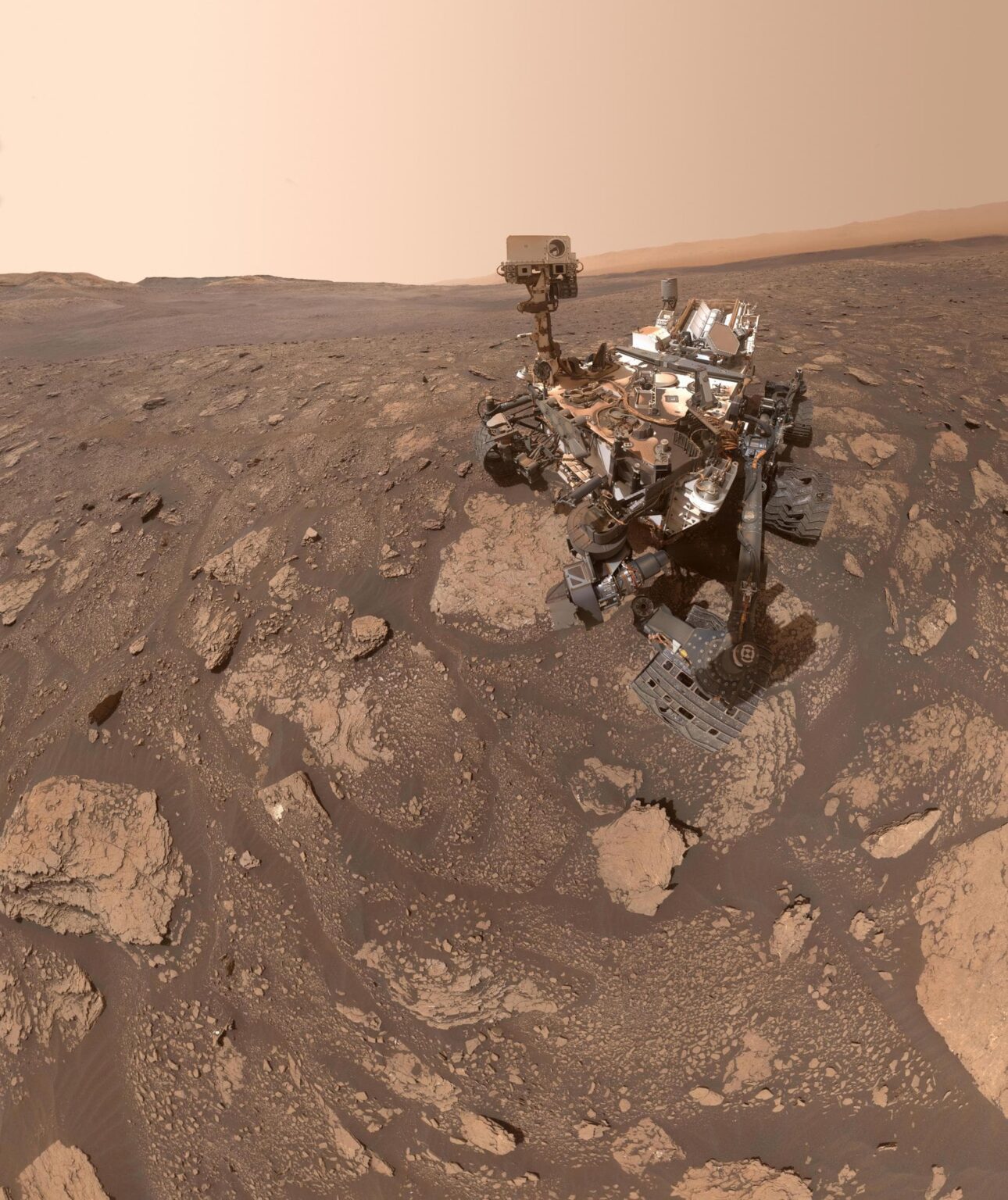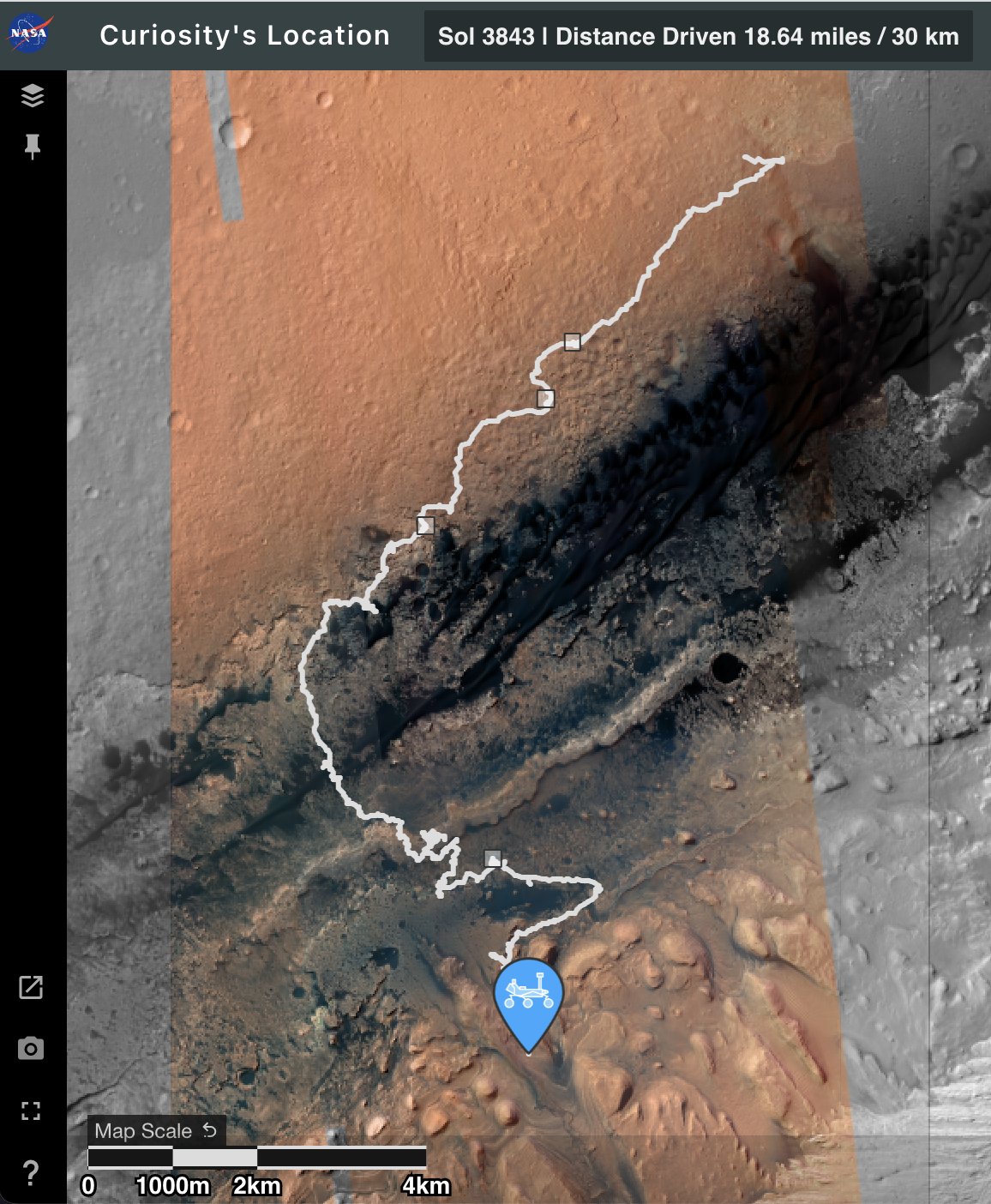On May 30, the Curiosity rover overcame the symbolic mark of 30 km traveled on the Martian surface. To date, it ranks second in this indicator among the rovers, behind only the legendary Opportunity.

Curiosity landed on Mars in August 2012. At that time, it was the most expensive, complex and heavy vehicle ever landed on the surface of the Red Planet. The main tasks of the device were to study the Martian climate, geology and chemical analysis of sedimentary deposits in order to assess the possibility of its habitability in the past or in the present.
The landing site of the rover was the 154-kilometer Gale crater. Billions of years ago, there was a lake on its territory that left behind powerful sedimentary deposits.
Over the years, Curiosity has taken a number of soil samples and transmitted to Earth an impressive amount of data, which analysis allowed astronomers to shed light on the past of the Red Planet. Despite a number of failures that are inevitable for the spacecraft operating in harsh Martian conditions, as well as greater wheel wear than expected, the rover is still in good technical condition. It continues to move, gradually climbing the slope of Mount Sharp (the central peak of Gale crater). On May 30, Curiosity overcame the symbolic mark of 30 km traveled on the Martian surface. Of all the rovers, only Opportunity managed to drive more. For 14.5 years of service, it covered a distance of 45.16 km.

If Curiosity continues at the same pace and does not encounter any serious technical problems, then in about five years it will have to beat the achievement of Opportunity. Unlike the “colleague”, Curiosity receives energy from a radioisotope thermoelectric generator (RTG). So it is not afraid of dust storms like the one that eventually ruined Opportunity. At the same time, the amount of energy produced by the RTG decreases. But according to the calculations of engineers, it should be enough for at least several more years of work.
Earlier we talked about the fact that Curiosity received a major software update that would allow it to move faster on the surface of the Red Planet and reduce the wear of its wheels.
Follow us on Twitter to get the most interesting space news in time
https://twitter.com/ust_magazine

